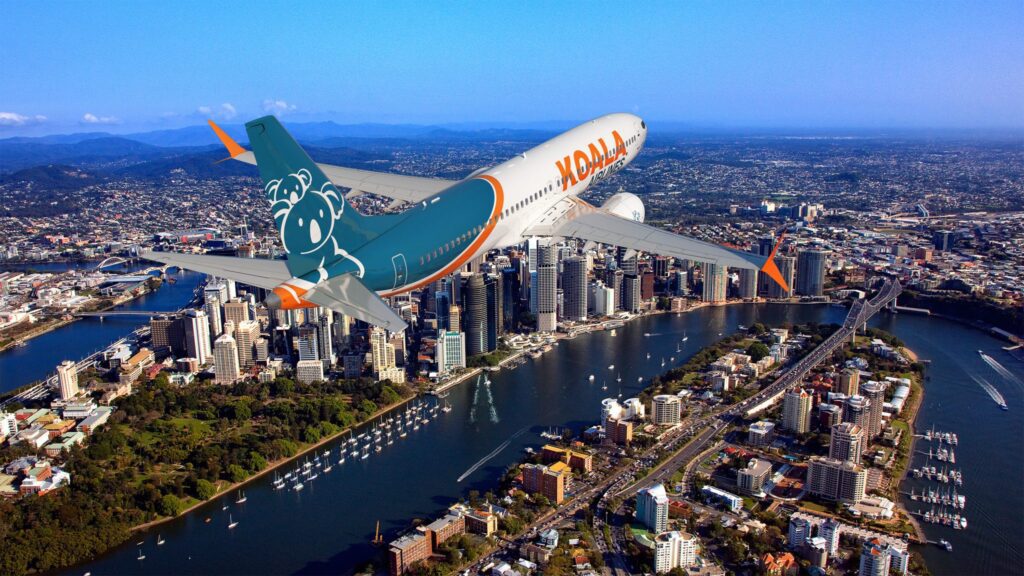Skift Take
The prospect of a level-headed and sustainable competitor entering the Australian market is exciting, but a huge number of unknowns makes it near-impossible to predict Koala Airlines’ chances in the wild.Â
Itâs been a rough year for the Australian airline industry. In late April, low-cost carrier Bonza suspended its entire flying program and entered voluntary administration, a form of protection from creditors. Despite assurances that the measure was temporary, the company never returned to the skies and ultimately collapsed.
A few weeks later, Rex Airlines â the countryâs third-largest operator â also entered voluntary administration. The company scrapped its Boeing 737 network linking Australiaâs largest cities, with only smaller regional planes currently flying.
Rex recently described the situation as a âdifficult period,â with new backers currently being sought to shore up the business for the long term.
The result is just two companies competing for passengers flying between the countryâs biggest population centers. The Qantas Group – which operates Australiaâs national airline alongside low-cost subsidiary Jetstar – and Virgin Australia, a smaller domestic-focused rival.
It raises a fundamental question that strikes at the heart of Australian aviation: Is it possible for a third player to thrive in a duopoly market, or will history likely repeat itself?
The latest attempt to shake up the status quo appears to be Koala Airlines. This week, the company revealed a slick new website and brand, claiming the carrier will help âbuild a brighter future.â
A lack of detail about its launch plans combined with lofty promises has left more questions than answers. After false starts and high-profile failures, some local media outlets are skeptical about the start-upâs prospects of actually getting off the ground.
Giving Koala Airlines the benefit of the doubt, hereâs what we know about a company that is aiming to âreshape the Australian landscape.â
1. It Already Has a C-Suite
While its official website koalaair.com.au is light on detail in many areas, one section thatâs brimming with content is the management team page.
Koala claims that its executives have over 300 years of combined experience in the industry. This includes roles at some of the worldâs biggest carriers such as Singapore Airlines, British Airways, Emirates, and Australiaâs national airline – and likely Koala rival – Qantas.
Its founding CEO is Bill Astling, an industry veteran with more than 45 years in the business. His biography references a catalog of senior advisory and consultant roles. Other high-ranking personnel include Keith Bolshaw as CFO, Sally Spring as COO, and Anton Meryl Nithianandan as CTO.
2. It Has a âGame-Changing Strategyâ
Koala claims its approach âwill fundamentally differâ from previous entrants in the Australian airline market. The start-up says the sector has suffered from a protectionist âTwo Airline Policyâ which was first introduced in 1952, and not relaxed until the 1990s. Today, the Qantas Group and Virgin Australia are the only players on most trunk routes, something Koala is hoping to change.
Acknowledging the graveyard of historical airline failures in the country, the Koala website states: âWhile many new low-cost carriers have entered the market since 1990 and focused solely on offering cheaper fares, almost entirely leading to unsustainable competition, Koala is taking a more innovative route.â
Quite how it will achieve this is not clear. The website continues: âOur goal is to carve out a unique niche that enhances the industry landscape without disrupting existing standards by creating a lasting impact on the industry.â
Seasoned industry watchers know that thereâs a colossal gulf between marketing platitudes and getting planes in the sky. Can Koala make the leap?
3. It Hopes to Fly the Boeing 737 Max
Between the stock photography on Koalaâs website, there are some more bespoke marketing images. These include digitally enhanced shots of a Koala-branded Boeing 737 Max 8 aircraft soaring above some of Australiaâs largest cities.

The Melbourne-based airline is seen flying over Brisbane and Canberra, offering clues about possible destinations.
Despite not having any aircraft at the time of writing, Koala says its CFO Keith Bolshaw will leverage his âextensive experience including seven of the worldâs top 10 aircraft lessorsâ to negotiate the leases on the planes. The Boeing 737 Max has well-documented woes, but a shortage of new aircraft and booming global demand means it is still hot property in the international leasing market.
4. It Wonât Chase Ultra-Low Fares
Taking to LinkedIn in the aftermath of Bonzaâs collapse, Koala Airlines highlighted the failed carrierâs pricing strategy as part of its downfall. âOnce again, the promise of low fares has been unsuccessful. It appears they have been too low,â read the post.
âYet again, the Australian airline industry will suffer from the repercussions of an ill-conceived plan, eroding confidence among travelers and investors which will impede the emergence of much needed domestic competition,â the post continued.
When considered alongside Koalaâs vision of âenhancing the industry landscape without disrupting existing standards,â it could suggest that Koala may position itself as more of a mid-market direct competitor to Qantas and Virgin Australia.
The demise of Bonza and a downsized Rex left hundreds of skilled aviation professionals looking for work, and Australian consumers limited in their choice of airlines. The potential for a genuinely sustainable competitor entering the domestic market is generating plenty of buzz.
Could Koala be the one to break Australia’s ‘third airline’ curse? The current lack of detail makes it difficult to predict Koala’s success with any certainty, but this week’s developments have put it on the radar of many industry insiders.
Airlines Sector Stock Index Performance Year-to-Date
What am I looking at? The performance of airline sector stocks within the ST200. The index includes companies publicly traded across global markets including network carriers, low-cost carriers, and other related companies.
The Skift Travel 200 (ST200) combines the financial performance of nearly 200 travel companies worth more than a trillion dollars into a single number. See more airlines sector financial performance.
Read the full methodology behind the Skift Travel 200.

